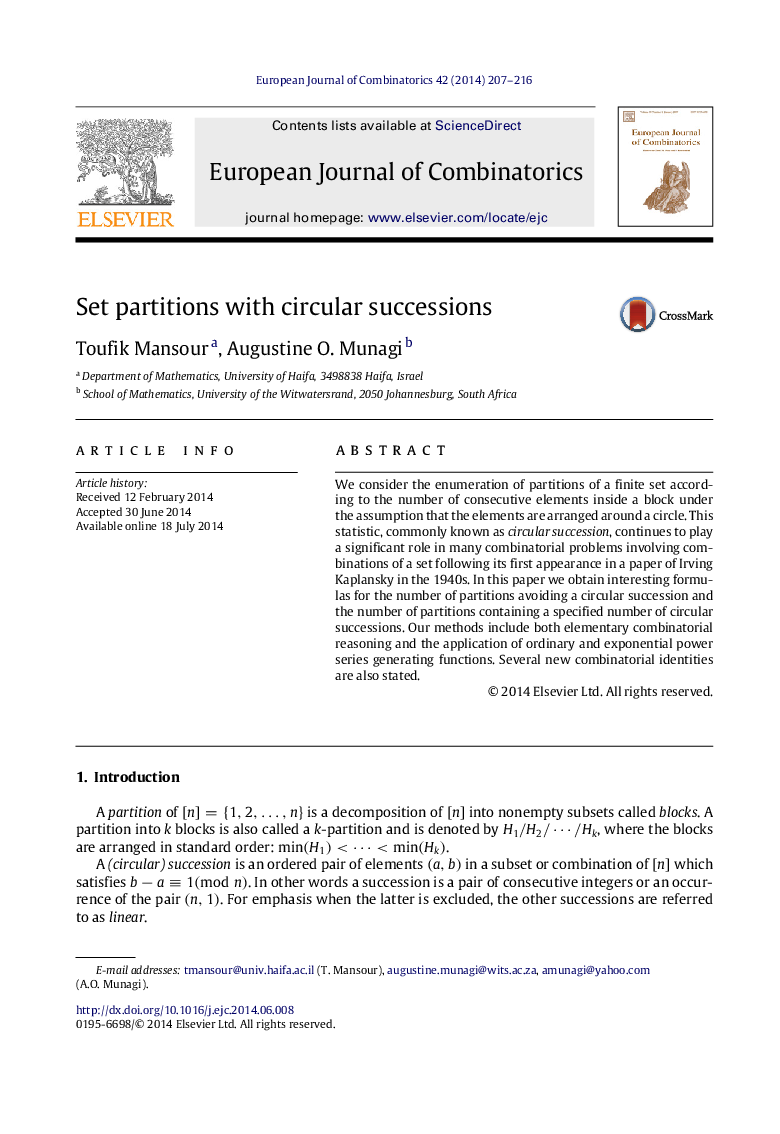| Article ID | Journal | Published Year | Pages | File Type |
|---|---|---|---|---|
| 4653553 | European Journal of Combinatorics | 2014 | 10 Pages |
We consider the enumeration of partitions of a finite set according to the number of consecutive elements inside a block under the assumption that the elements are arranged around a circle. This statistic, commonly known as circular succession, continues to play a significant role in many combinatorial problems involving combinations of a set following its first appearance in a paper of Irving Kaplansky in the 1940s. In this paper we obtain interesting formulas for the number of partitions avoiding a circular succession and the number of partitions containing a specified number of circular successions. Our methods include both elementary combinatorial reasoning and the application of ordinary and exponential power series generating functions. Several new combinatorial identities are also stated.
